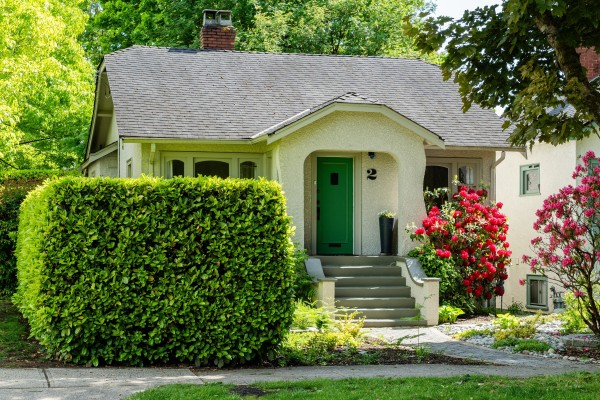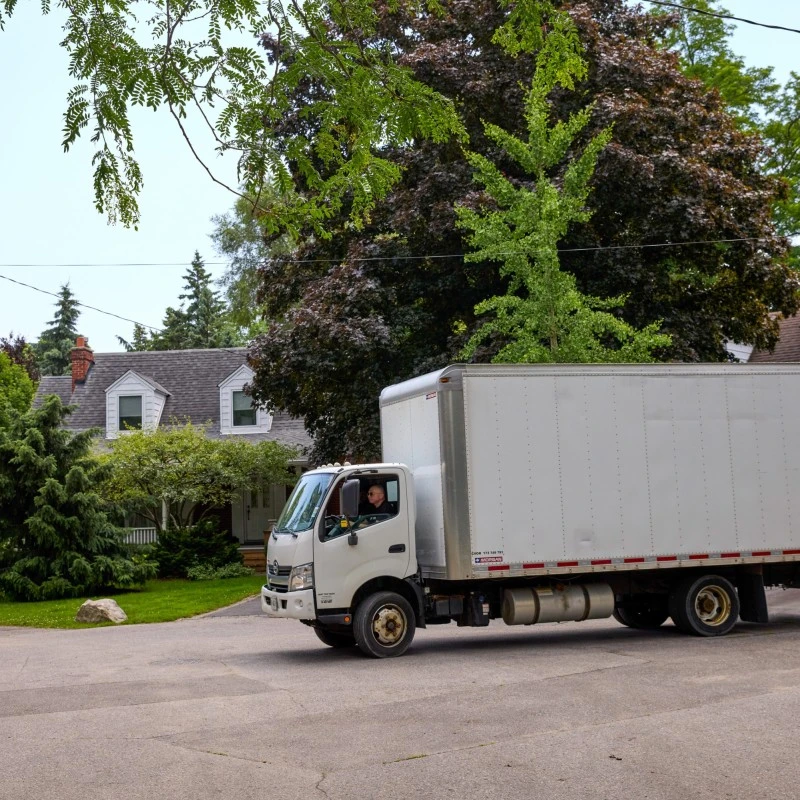The cost of living in Ottawa [2025]

![The cost of living in Ottawa [2025] The cost of living in Ottawa [2025]](https://cdn.topmove.ca/image/blog/2b7af8679d20c7e1111b6a75b1b0f5a5.jpeg)
As far as cities go, Canada’s capital has a lot going for it. Ottawa’s green spaces, national museums and galleries, diverse and stable job market, low crime rate and relative affordability make it appealing to many demographics. Unlike Toronto, it's a walkable city (for the most part), and its bilingualism creates accessibility for a wide range of cultures.
If you are unfazed by harsh winters and don’t mind a bit less variety for clubs and nightlife, then Ottawa’s positive attributes may very well meet your needs for a medium-sized Canadian city. Before making a final decision, keep reading to learn about the cost of living in Ottawa for 2025.
Reasons to move to Ottawa
 Not everyone wants to live in a huge metropolis like Toronto or Montreal. Ottawa meets all the big-city standards while offering gorgeous green spaces, such as Gatineau Park and Ottawa River for recreation and time in nature.
Not everyone wants to live in a huge metropolis like Toronto or Montreal. Ottawa meets all the big-city standards while offering gorgeous green spaces, such as Gatineau Park and Ottawa River for recreation and time in nature.
Canada’s capital is perfect for those seeking government or tech jobs in a strong economy, reputable schools, and top-of-the-line healthcare services.
Arts and culture lovers appreciate the city’s museums and galleries. Ottawa's low crime rate, excellent public transit and walkability are all appealing attributes for families, students and seniors.
Salaries in Ottawa
The average annual salary in Ottawa in 2025 is CA$64,000, which is 18.5% higher than the Canadian average. The average household income is around CA$126,700.
What is different about Ottawa?
 First of all, Ottawa is one of the coldest capital cities in the whole world. Winters are long and brutal. Furthermore, the city has a reputation for being quiet and sleepy—meaning that nightlife and entertainment are limited.
First of all, Ottawa is one of the coldest capital cities in the whole world. Winters are long and brutal. Furthermore, the city has a reputation for being quiet and sleepy—meaning that nightlife and entertainment are limited.
Ottawa’s economy relies heavily on government jobs and lacks variety in other sectors. Finding a good job can sometimes be challenging for those not working for the government. Many Ottawa jobs require fluency in both English and French, making job searching even more limiting for some.
All that being said, intellectuals and academics will appreciate that Ottawa is considered the most educated city in the world—boasting the greatest numbers of engineers, scientists and Ph.Ds of any Canadian city.
The cost of living in Ottawa
Renting in Ottawa
 Ottawa has numerous top-ranking universities and colleges, which attract multitudes of Canadian and international students. Because of this, finding rentals in Ottawa can be challenging in August or September. If possible, choose to move at a different time of year. Spring is naturally a time of new beginnings and an ideal time of year to join a new community.
Ottawa has numerous top-ranking universities and colleges, which attract multitudes of Canadian and international students. Because of this, finding rentals in Ottawa can be challenging in August or September. If possible, choose to move at a different time of year. Spring is naturally a time of new beginnings and an ideal time of year to join a new community.
Accessible and family-friendly neighbourhoods in Ottawa
-
Vanier
-
Carlington
-
Overbrook
-
Bells Corners
-
Châteauneuf (Orleans Village)
Ottawa’s public transit is thorough and most areas are suitable for walking and cycling. Spend time researching commuting to your school or job before choosing your future neighbourhood.
As of 2025, the average monthly rent for an apartment in Ottawa is CA$2,124. Some neighbourhoods, such as Alta Vista and Herongate, have apartment rentals as low as CA$1,580.
Many choose the more affordable option of moving into a shared house, with roommates. The best platforms to peruse rental listings in Canada include:
-
Craigslist
-
Kijiji
-
Facebook Marketplace
-
Roomies.ca
-
Rentals.ca
Buying property in Ottawa
Homes are still affordable in Ottawa, with the average price of a home being CA$670,260 for 2025.

Even with a 6.1% increase from last year, Ottawa home price averages are basically a quarter of the price of the average home in Vancouver. Neighbourhoods such as Vanier and Lower Town offer the cheapest detached-home option, with average home prices hovering around CA$400,000.
Ottawa’s Neighbourhoods of Interest
Ottawa has over 80 neighbourhoods—including bustling inner city areas, prestigious historical zones, quiet residential zones, and affluent areas with wide streets lined with huge leafy trees.
Being a homeowner in Ottawa is the more economical choice if it's within your realm of possibility. The general trend for rentals vs. real estate in Ottawa is that average rental rates for apartments are at the higher end—excluding the more expensive areas of the city. Home prices in most areas are affordable compared to other Canadian cities.
Here are some of the most popular neighbourhoods in Ottawa:
Centretown
 Centretown is the heart of the city, offering diversity with convenience and walkability. The area is known for its architecture, where gorgeous heritage homes share space with modern condos. Arts and nightlife are big in Centretown, and the area draws students and professionals who live alongside longtime locals. Centretown combines urban living with just enough green spaces to feel a sense of balance.
Centretown is the heart of the city, offering diversity with convenience and walkability. The area is known for its architecture, where gorgeous heritage homes share space with modern condos. Arts and nightlife are big in Centretown, and the area draws students and professionals who live alongside longtime locals. Centretown combines urban living with just enough green spaces to feel a sense of balance.
The average cost of rent for an apartment in Centretown is CA$2,200, and the average price for a home is around CA$800,000.
Orleans
 Beyond being family-friendly and having top-shelf amenities and abundant natural spaces, the suburb of Orleans boasts a strong Francophone community—adding an extra layer of cultural diversity and community spirit. Petrie Island in the Ottawa River offers sandy beaches, walking trails and outdoor exploration. The retail and restaurant scenes continue to grow, creating more job opportunities for locals, while strengthening the community spirit of Orleans.
Beyond being family-friendly and having top-shelf amenities and abundant natural spaces, the suburb of Orleans boasts a strong Francophone community—adding an extra layer of cultural diversity and community spirit. Petrie Island in the Ottawa River offers sandy beaches, walking trails and outdoor exploration. The retail and restaurant scenes continue to grow, creating more job opportunities for locals, while strengthening the community spirit of Orleans.
The average cost of rent for an apartment in Orleans is CA$2,000, and the average price for a home is around CA$680,000.
The Glebe
 The Glebe is more than just a neighbourhood, it's a community. It's filled with beautiful streets, historic homes, and one-of-a-kind restaurants, boutiques and cafes. Lansdowne Park hosts TD Place and ample green spaces along the Rideau Canal. The Ottawa Farmers Market is sizable, and the area has a vivid arts scene. Patterson Creek and Brown’s Inlet offer more green spaces along the water.
The Glebe is more than just a neighbourhood, it's a community. It's filled with beautiful streets, historic homes, and one-of-a-kind restaurants, boutiques and cafes. Lansdowne Park hosts TD Place and ample green spaces along the Rideau Canal. The Ottawa Farmers Market is sizable, and the area has a vivid arts scene. Patterson Creek and Brown’s Inlet offer more green spaces along the water.
The average cost of rent for an apartment in the Glebe is CA$2,400, and the average price for a home is around CA$1.27 million.
Sandy Hill
 Sandy Hill sits conveniently east of Ottawa’s downtown centre, whose tree-lined streets and historic homes give it a beautiful, comforting aesthetic. Its convenient location makes it popular with students and professionals, and its strong sense of community appeals to families. The University of Ottawa brings liveliness and energy, and abundant green spaces, such as Strathcona Park offer a reprieve from fast-paced urban lifestyles.
Sandy Hill sits conveniently east of Ottawa’s downtown centre, whose tree-lined streets and historic homes give it a beautiful, comforting aesthetic. Its convenient location makes it popular with students and professionals, and its strong sense of community appeals to families. The University of Ottawa brings liveliness and energy, and abundant green spaces, such as Strathcona Park offer a reprieve from fast-paced urban lifestyles.
The average cost of rent for an apartment in Sandy Hill is CA$1,800, and the average price for a home is around CA$1 million.
Things to do in Ottawa
Rideau Canal

Perhaps the biggest highlights in Ottawa are its stunning natural spaces, including the UNESCO World Heritage site, the Rideau Canal. The pathways in this beautiful part of Ottawa offer endless walking and cycling opportunities and even skating during the wintertime. Gatineau Park is a popular place for cross-country skiing, and Petrie Island is where you can find sandy beaches and family swimming.
Ottawa River
Experience the thrill of white water rafting on the Ottawa River.
Prices for groups range from CA$99.50 to CA$174.50—depending on the company, the age of participants, and if you go for family or partner packages.
Ziplining
Interzip Rogers offers a zipline adventure between Ontario and Quebec.
Tickets for youths cost CA$19.99 and CA$24.99 for adults.
National Gallery of Canada

The National Gallery of Canada displays perhaps the most impressive collection of Indigenous and Canadian art in the country. General admission is as follows:
- Adults: CA$20
- Seniors and students: CA$14
- Youth ages 12–19: CA$8
- Children under 12: Free
Gladstone Theatre
The Gladstone Theatre is a celebrated venue where fans can check out independent and community theatre productions.
Ticket prices vary depending on seating and the specific show—generally falling between CA$15 to CA$75.
Ottawa events
Diversity is alive and well in Ottawa—especially when it comes to the city’s exciting and dynamic annual events.
Crackup Comedy Festival
The Crackup Comedy Festival in March features a diverse mix of stand-up, improv, and sketch comedy featuring top comedians from across Canada.
Tickets are CA$33 per person.
Ottawa International Writers Festival
Bookworms and intellectuals will appreciate the bi-annual (spring and fall) Ottawa International Writers Festival, featuring author talks, storytelling events, and panel discussions. Pass prices are as follows:
-
Full Festival Pass: Priced at CA$160
-
Pick-3 Pass: For CA$60 (CA$55 for students or seniors), attendees can choose any three events to attend.
-
Individual Event Tickets: General admission for tickets is CA$25 per event, with discounted rates of CA$20 for seniors, students, and online viewing.
Summer Solstice Indigenous Festival
 It doesn’t get much more local than June’s Summer Solstice Indigenous Festival, which celebrates Indigenous music, dance, theatre, and visual arts, with hands-on workshops and performances. The festival is free! However, certain activities such as workshops and culinary experiences may require the purchase of tickets.
It doesn’t get much more local than June’s Summer Solstice Indigenous Festival, which celebrates Indigenous music, dance, theatre, and visual arts, with hands-on workshops and performances. The festival is free! However, certain activities such as workshops and culinary experiences may require the purchase of tickets.
For example, tickets for the Summer Solstice Indigenous Music Awards start at CA$20.
The Ottawa International Animation Festival in September is the biggest festival of its type, in all of North America. The festival attracts the best of the best industry professionals and devoted fans.
Ottawa Senators NHL Hockey
 When it comes to any major Canadian city, NHL hockey games deserve a mention, and the Ottawa Senators have a devoted fan base adding to the excitement. Admission prices are as follows:
When it comes to any major Canadian city, NHL hockey games deserve a mention, and the Ottawa Senators have a devoted fan base adding to the excitement. Admission prices are as follows:
-
Single game tickets: CA$19 and upwards.
-
Playoff ticket pricing: During the 2025 playoffs, tickets in the "Milk Zone" were reported at CA$150, compared to the regular season price of approximately CA$36. For premium experiences, such as private suites, options start at CA$1,686.
The cost of food in Ottawa
 Ottawa is close to thriving agricultural zones, so local produce is easily attainable.
Ottawa is close to thriving agricultural zones, so local produce is easily attainable.
Depending on the size of your household, groceries could cost up to CA$1000 per month to feed a family. Individual expenses could range from CA$400 to CA$500 per month.
Your monthly food bill will be higher if you prioritise organic or gourmet groceries or eat at restaurants often.
Ottawa’s restaurant scene offers a lot of diversity where one can enjoy farm-to-table dining, fine dining, international cuisine, street food, markets, fusion, and craft beer and coffee roasting on-site. According to Google Maps, Ottawa has 1933 restaurants, so it shouldn’t be a problem finding a place that everyone agrees on.
Cheap Eats
CA$5 – CA$12 per plate
-
Si Señor—Mexican
-
Aladdin Bakery—Lebanese
-
Run 2 Patty—Jamaica
Mid Range Meals
CA$25 – CA$60 per plate
-
Absinthe—French
-
Supply and Demand—Seafood and pasta
-
The Green Door—Vegetarian
Fine Dining
CA$60 – CA$100 per plate
-
Gezellig—Canadian
-
La Bacarra—French
Getting around in Ottawa

The cost of commuting in Ottawa
- A monthly OC Transpo pass costs CA$130, making public transit costs fairly predictable.
- If you drive, fuel costs range from CA$80 to CA$100 per month, based on what type of car you drive, and your commuting distance and frequency. Car insurance averages around CA$95 per month.
- The cost for Uber and taxis is based on distance. For Uber your base fare of CA$1.50, plus CA$0.15 per minute and CA$0.75 per kilometre. The minimum taxi fare is CA$3.33, with an additional CA$1.72 per kilometre.
- Communauto is a car-sharing app that offers vehicles starting at CA$3.75 per hour, plus a CA$0.41 per kilometre fee.
- Citywide e-scooter companies Bird and Neuron charge a CA$1 unlocking fee, plus CA$0.35 per minute of use.
Ottawa is generally bike-friendly—central areas are compact enough for cycling to and fro. If you're commuting from or to the city's outskirts, the distance is too great to rely solely on cycling. Cycling is mostly free, with minimal maintenance costs.
Parking in Ottawa
 Parking in Ottawa is better than many other cities. But, of course, it also depends on the area.
Parking in Ottawa is better than many other cities. But, of course, it also depends on the area.
Street parking
Rates fall between CA$1 – CA$6 per hour, with downtown being the most expensive area.
Street parking is metered from 7 am to 7 pm, Monday to Saturday. Free parking is often available on Sundays in most areas.
Public parking Lots
Rates range from CA$2 – CA$6 per hour. Daily rates are CA$15 – CA$30.
Public lots are spread across downtown and popular districts like ByWard Market, the Glebe, and Centretown.
Parkades (parking garages)
Daily rates range from CA$10 – CA$40 per day. Most parkades are open 24/7.
What do our customers say?


![The Cost of Living in Canada [2025] The Cost of Living in Canada [2025]](https://cdn.topmove.ca/image/blog/fd5e6f8de7a01a874376620f785ffdba.jpeg)
![The Cost of Living in Canada [2025] The Cost of Living in Canada [2025]](https://cdn.topmove.ca/image/blog/a1d96e743c7ff302c8b61de9e16a7310.jpeg)
![The Cost of Living in Toronto [2025] The Cost of Living in Toronto [2025]](https://cdn.topmove.ca/image/blog/ded0549bf885e2463f6b3516d9f8f021.jpeg)
![The Cost of Living in Montreal [2025] The Cost of Living in Montreal [2025]](https://cdn.topmove.ca/image/blog/3d9ba911fae51ef6bf042019500f2c4b.jpeg)

![The Cost of Living in Victoria [2025] The Cost of Living in Victoria [2025]](https://cdn.topmove.ca/image/blog/012c60baf3a9dd52b2112857fe508e4c.jpeg)
![The Cost of Living in Edmonton [2025] The Cost of Living in Edmonton [2025]](https://cdn.topmove.ca/image/blog/85d8f0085c5276a3f3add5828109b82a.jpeg)
![The Cost of Living in Winnipeg [2025] The Cost of Living in Winnipeg [2025]](https://cdn.topmove.ca/image/blog/8874f5688baa4a1291d7eae6c507f8aa.jpeg)
![The Cost of Living in Calgary [2025] The Cost of Living in Calgary [2025]](https://cdn.topmove.ca/image/blog/44a5bcb6ebf6c658f5c5fe30ab7077c9.jpeg)
![How much do you need to earn to live comfortably in Vancouver? [2025] How much do you need to earn to live comfortably in Vancouver? [2025]](https://cdn.topmove.ca/image/blog/7036030cc91de9cff4153dc88aa88f85.jpeg)
![How much do you need to earn to live comfortably in Toronto? [2025] How much do you need to earn to live comfortably in Toronto? [2025]](https://cdn.topmove.ca/image/blog/de7b110360e9510bfcb89724b7ef9af4.jpeg)
![How much do you need to earn to live comfortably in Montreal? [2025] How much do you need to earn to live comfortably in Montreal? [2025]](https://cdn.topmove.ca/image/blog/80e0ee82a5a92d9451b96ff875513ee4.jpeg)
![How much do you need to earn to live comfortably in Victoria? [2025] How much do you need to earn to live comfortably in Victoria? [2025]](https://cdn.topmove.ca/image/blog/f0bdeb7f43a3340afba84793c4fddbac.jpeg)
![How much do you need to earn to live comfortably in Winnipeg? [2025] How much do you need to earn to live comfortably in Winnipeg? [2025]](https://cdn.topmove.ca/image/blog/d52ddc1f425f60fd553dcc00f7eb0fb5.jpeg)
![How much do you need to earn to live comfortably in Calgary? [2025] How much do you need to earn to live comfortably in Calgary? [2025]](https://cdn.topmove.ca/image/blog/46fef724030602a02f51110ffb3ac569.jpeg)










